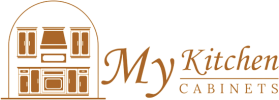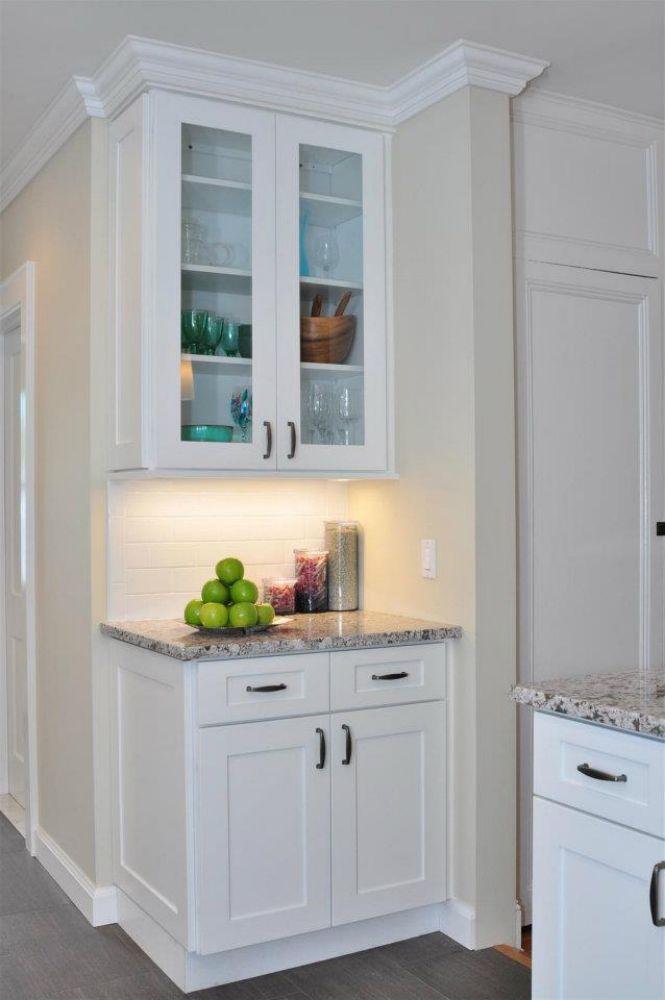Transforming Your Space: How to Plan a Kitchen Remodel Budget with Kitchen Cabinets as the Focus
Remodeling your kitchen is one of the most rewarding home improvement projects you can undertake. It not only enhances your everyday living experience but also significantly increases your property’s value. However, creating a remodel plan that balances beauty, function, and cost can be challenging — especially when kitchen cabinets become the centerpiece of your renovation.
Cabinets are often the largest visual and financial investment in any kitchen remodel, accounting for 25% to 40% of the total cost. The key to success lies in strategic planning — setting a clear budget, prioritizing where to spend, and choosing designs that offer the best return on investment. Whether you’re working on a modest upgrade or a high-end transformation, understanding how to build your budget around cabinetry ensures you achieve lasting value without overspending.
At kitchen cabinets by My Kitchen Cabinets, homeowners can find expertly crafted, durable, and customizable cabinetry designed to elevate kitchens of every style and budget. From elegant shaker designs to space-maximizing storage solutions, our cabinets offer the perfect balance between beauty, quality, and affordability — making them the ideal foundation for any kitchen remodel.
Why Kitchen Cabinets Should Be the Starting Point of Your Remodel
Kitchen cabinets define the character, organization, and functionality of your space. They influence not only how your kitchen looks but also how efficiently it operates. Because they occupy the largest portion of the budget, starting with your cabinetry helps anchor your entire remodeling plan.
Reasons to Prioritize Cabinets in Your Budget
-
Central Design Element: Cabinets determine color schemes, materials, and layout flow.
-
High Visual Impact: They take up the most wall and floor space, shaping first impressions.
-
Functional Value: Well-planned cabinetry maximizes storage, accessibility, and comfort.
-
Longevity: Quality cabinets last decades, unlike finishes or appliances that may need replacement.
-
Resale Appeal: Updated cabinetry increases market value and home desirability.
When you plan your remodel around cabinets, every other design decision — countertops, backsplash, flooring, and lighting — aligns naturally with your core investment.
Establishing Your Total Kitchen Remodel Budget
Before selecting materials or finishes, you need a realistic overall budget. Most experts recommend allocating 10% to 15% of your home’s total value for a complete kitchen remodel. For example, if your home is worth $300,000, your kitchen remodel budget should range between $30,000 and $45,000.
General Cost Breakdown:
-
Cabinets: 25%–40%
-
Appliances: 15%–20%
-
Countertops: 10%–15%
-
Flooring: 7%–10%
-
Lighting & Electrical: 5%–7%
-
Plumbing & Fixtures: 5%–7%
-
Labor & Installation: 20%–25%
Because cabinets represent such a large portion of the budget, careful selection and planning can help you manage costs across the entire remodel.
Determining Your Cabinet Budget Range
Your cabinet budget depends on the size of your kitchen, materials chosen, and customization level. Here’s a general guide:
| Cabinet Type | Average Cost (Installed) | Best For |
|---|---|---|
| Stock Cabinets | $150–$400 per linear foot | Budget remodels, standard layouts |
| Semi-Custom Cabinets | $300–$750 per linear foot | Most homeowners (balance between quality and cost) |
| Custom Cabinets | $800–$1,500+ per linear foot | Luxury designs, unique layouts |
When setting your budget, consider your long-term goals. If you plan to stay in your home for 10+ years, investing in higher-quality cabinetry may save you money in the long run through durability and timeless appeal.
Choosing Between Stock, Semi-Custom, and Custom Cabinets
Understanding the differences between cabinet types helps you make budget-conscious choices without sacrificing quality.
Stock Cabinets
-
Pros: Affordable, quick delivery, available in standard sizes.
-
Cons: Limited design flexibility and color options.
-
Ideal For: Budget remodels or rental properties.
Semi-Custom Cabinets
-
Pros: Flexible sizes, wider range of materials and finishes, excellent balance of value and customization.
-
Cons: Slightly higher cost and longer lead times.
-
Ideal For: Most homeowners seeking quality and variety.
Custom Cabinets
-
Pros: Completely tailored to your kitchen’s size, layout, and aesthetic.
-
Cons: Most expensive and time-consuming option.
-
Ideal For: High-end remodels and homeowners seeking unique design.
Semi-custom cabinetry offers the best mix of affordability and personalization — a favorite among modern remodelers.
Setting Your Priorities: Needs vs. Wants
When designing your remodel budget, it’s important to separate essential upgrades from luxury add-ons.
Must-Have Cabinet Features
-
Durable materials (solid wood, plywood construction)
-
Soft-close doors and drawers
-
Adjustable shelving
-
Efficient corner storage (Lazy Susans, pull-out trays)
Nice-to-Have Cabinet Features
-
Custom inserts for cutlery and spices
-
Built-in charging stations or lighting
-
Decorative moldings or glass doors
-
Designer hardware and finishes
Listing your priorities early helps you allocate funds wisely, ensuring you don’t overspend on aesthetics before covering functionality.
Factoring in Labor and Installation Costs
Even the best cabinets will underperform if installed incorrectly. Professional installation ensures proper alignment, structural stability, and long-term durability.
Average Installation Costs:
-
Stock Cabinets: $50–$150 per linear foot
-
Semi-Custom Cabinets: $100–$250 per linear foot
-
Custom Cabinets: $200–$500 per linear foot
Ways to Manage Installation Costs:
-
Request multiple quotes from licensed installers.
-
Consider bundling labor through your cabinet supplier for potential savings.
-
Avoid major layout changes that require plumbing or electrical relocation.
Always factor installation costs into your total budget to prevent surprises later in the project.
Understanding Cabinet Material Options and Their Impact on Budget
The materials you choose directly influence price, appearance, and durability.
Common Cabinet Materials:
-
Solid Wood: Premium quality, classic aesthetic, higher cost.
-
Plywood: Durable, moisture-resistant, cost-effective alternative to solid wood.
-
MDF (Medium Density Fiberboard): Smooth surface, affordable, but less resistant to humidity.
-
Particleboard: Budget-friendly but lower durability.
-
Thermofoil or Laminate: Easy maintenance and modern look, available in many finishes.
Tip:
For maximum ROI, choose a combination like solid wood doors with plywood boxes — offering both durability and cost efficiency.
Don’t Forget Hardware and Accessories
Small details like handles, knobs, and hinges may seem minor but can affect your overall budget and design impact.
Hardware Cost Range:
-
Standard: $3–$10 per piece
-
Designer or Custom: $20–$100 per piece
Popular Finishes:
-
Brushed nickel
-
Matte black
-
Oil-rubbed bronze
-
Polished chrome
Hardware not only complements the cabinet finish but also enhances usability and durability.
Accounting for Countertops, Appliances, and Lighting
While cabinets are your primary focus, complementary elements like countertops and lighting should align in both style and cost.
Smart Budget Allocation Strategy:
-
Select your cabinetry first to anchor the design.
-
Choose countertops and lighting that enhance, not compete with, your cabinets.
-
Leave a 10–15% contingency fund for unexpected expenses.
Coordinating all components ensures visual harmony and prevents mid-project overspending.
Saving Money Without Sacrificing Quality
A successful remodel doesn’t always mean choosing the most expensive options. With smart planning, you can achieve a high-end look on a reasonable budget.
Cost-Saving Strategies:
-
Keep Your Layout: Avoid relocating plumbing or walls.
-
Mix Materials: Combine open shelving with solid cabinets for a modern and affordable look.
-
Refinish Instead of Replace: If cabinets are structurally sound, refacing or painting can save thousands.
-
Choose Standard Sizes: Custom dimensions increase labor and material costs.
-
Shop Seasonally: Many cabinet retailers offer discounts during fall and winter.
Balancing creativity with practicality maximizes your remodel’s value and longevity.
How to Finance a Kitchen Remodel
If you’re planning a large-scale project, financing options can help you manage upfront costs while keeping long-term payments affordable.
Common Financing Methods:
-
Home Equity Loan or Line of Credit (HELOC): Low-interest, secured by your home’s value.
-
Personal Loan: Quick approval, ideal for smaller remodels.
-
Credit Cards: Convenient for short-term purchases but best paid off quickly.
-
In-House Financing: Many cabinet suppliers and contractors offer payment plans.
Before financing, review your credit score, compare interest rates, and calculate monthly payments to avoid overextending your budget.
Building a Realistic Remodel Timeline
A well-planned budget also depends on a realistic schedule. Delays can add costs, especially if you’re living off-site or rescheduling contractors.
Typical Timeline Breakdown:
-
Planning & Design: 3–6 weeks
-
Ordering Cabinets & Materials: 4–8 weeks
-
Demolition & Prep: 1–2 weeks
-
Installation & Finishing: 3–6 weeks
Communicate regularly with your contractor or supplier to stay on schedule and on budget.
Why Working with a Reputable Supplier Matters
Choosing the right cabinet supplier ensures quality materials, accurate measurements, and professional guidance — all key to staying within budget.
At My Kitchen Cabinets, our specialists help homeowners plan effectively by:
-
Offering transparent pricing and product comparisons.
-
Providing free design consultations to visualize your layout.
-
Recommending cabinetry options that maximize your return on investment.
-
Ensuring CARB2 compliance and eco-friendly manufacturing standards.
By partnering with a trusted supplier, you avoid costly installation errors, delivery delays, or material mismatches.
Conclusion
Planning a kitchen remodel budget with kitchen cabinets as the focus requires thoughtful organization, clear priorities, and informed decision-making. Cabinets not only define the visual identity of your kitchen but also represent one of the smartest long-term investments in your home.
To create a successful budget:
-
Start with a total spending cap based on your home’s value.
-
Allocate 25–40% for cabinetry.
-
Balance quality and customization according to your goals.
-
Partner with reputable professionals like My Kitchen Cabinets for quality assurance and expert guidance.
By focusing your remodel plan around cabinetry, you create a kitchen that’s not just visually stunning — but efficient, functional, and built to last. A well-planned investment in quality cabinets enhances both your lifestyle and your home’s resale value for years to come.
Frequently Asked Questions (FAQs)
1. How much should I allocate for kitchen cabinets in my remodel budget?
Typically, 25–40% of your total kitchen remodel budget should go toward cabinets, depending on material quality, customization, and installation complexity.
2. Are semi-custom cabinets a good value for the price?
Yes. Semi-custom cabinets offer the best combination of affordability and flexibility. They provide a high-quality appearance with customizable options, ideal for mid-range remodels.
3. How can I reduce cabinet costs without sacrificing quality?
Opt for durable mid-tier materials like plywood boxes with solid wood doors, keep your current kitchen layout, and consider refacing instead of replacing if your cabinet structure is still strong.
4. How long do kitchen cabinet installations usually take?
Installation time varies from 3 to 6 weeks, depending on kitchen size, complexity, and material availability. Custom projects may take longer due to fabrication and finishing.
5. Is it better to replace or reface my kitchen cabinets?
If your cabinets are structurally sound, refacing (replacing doors and veneers) can refresh your kitchen for 30–50% less than full replacement while still delivering strong ROI.
Read: Are painted kitchen cabinets more likely to show wear than stained ones?
Read: What are the pros and cons of two-tone kitchen cabinets?

